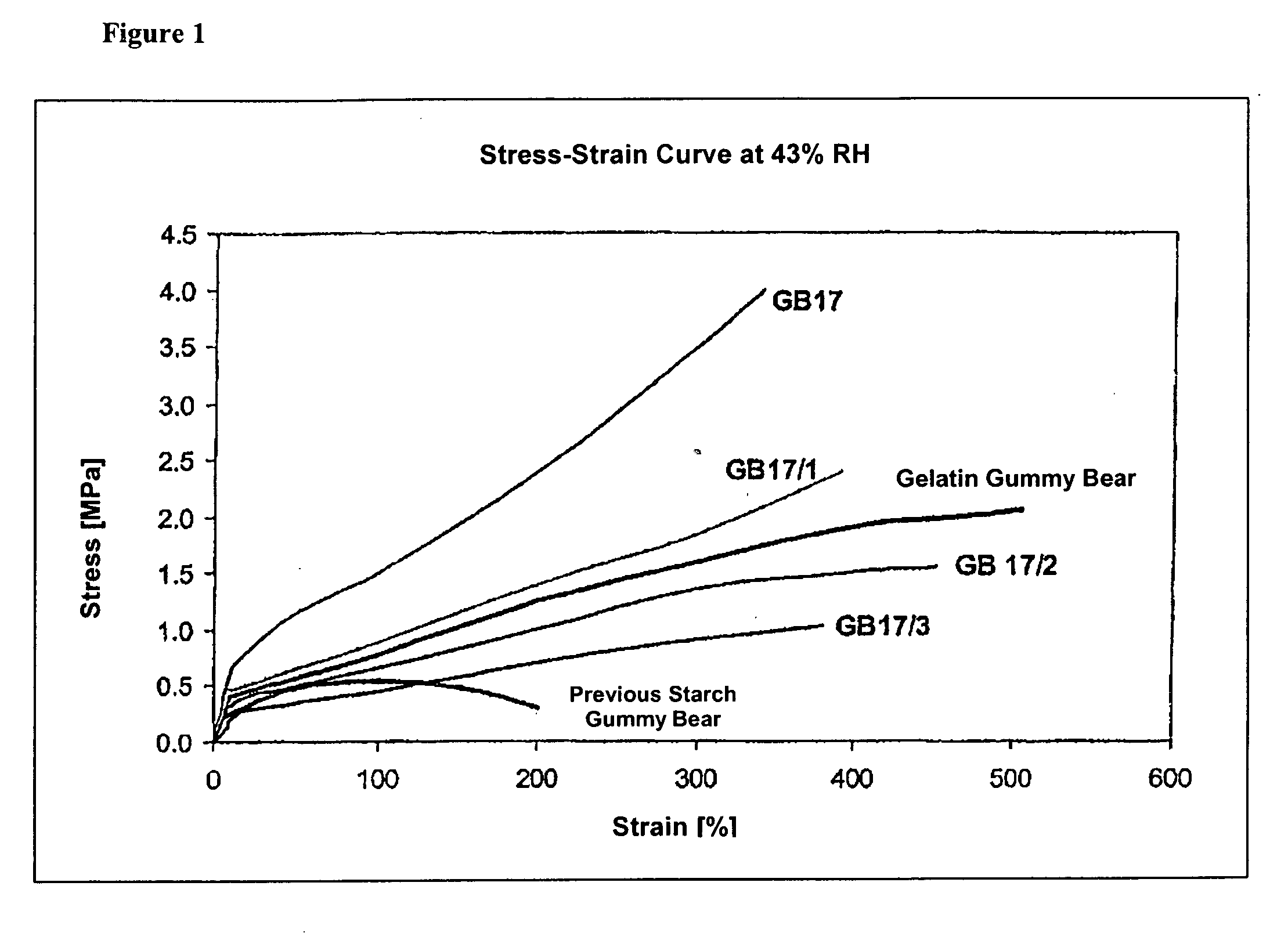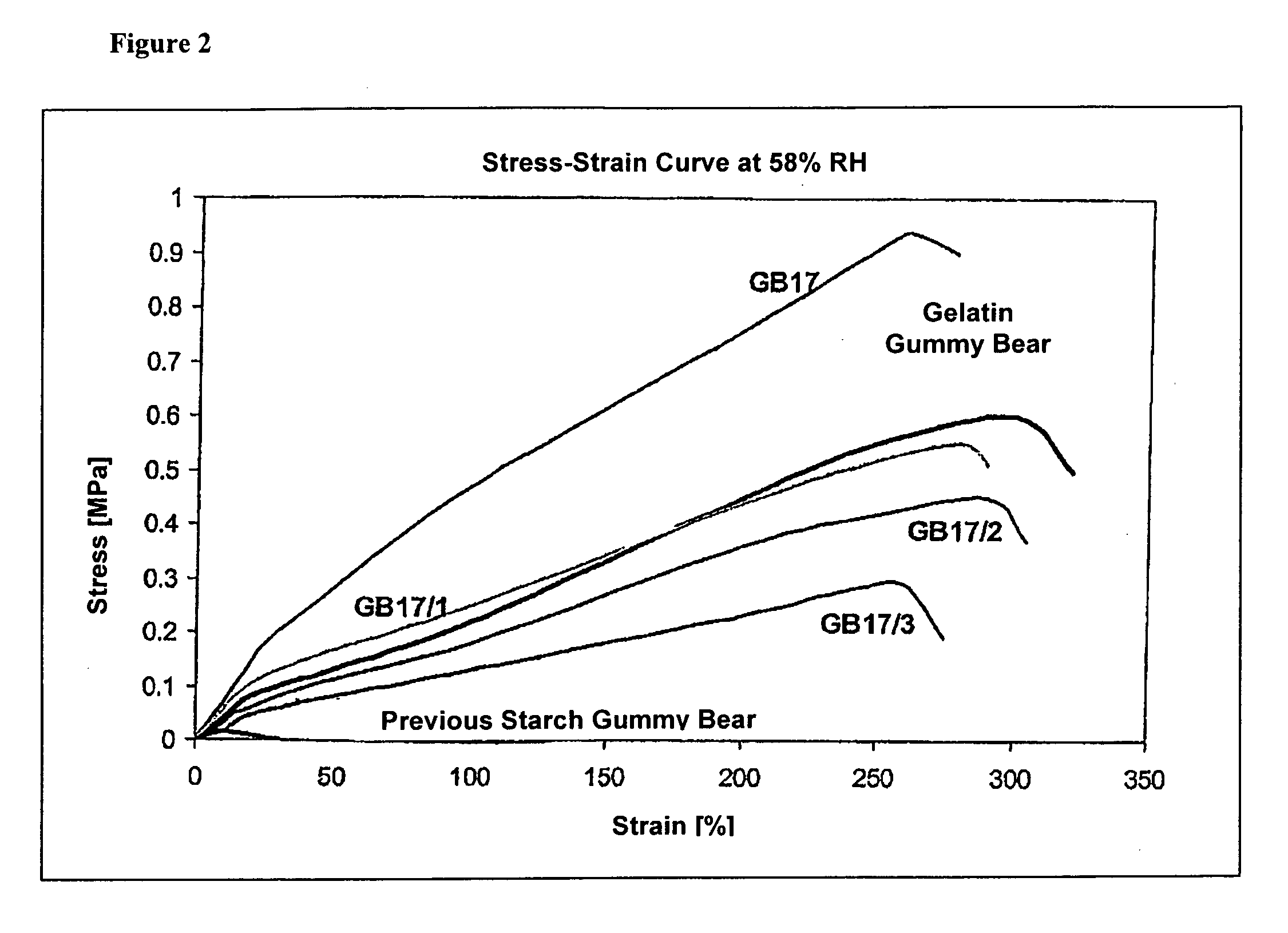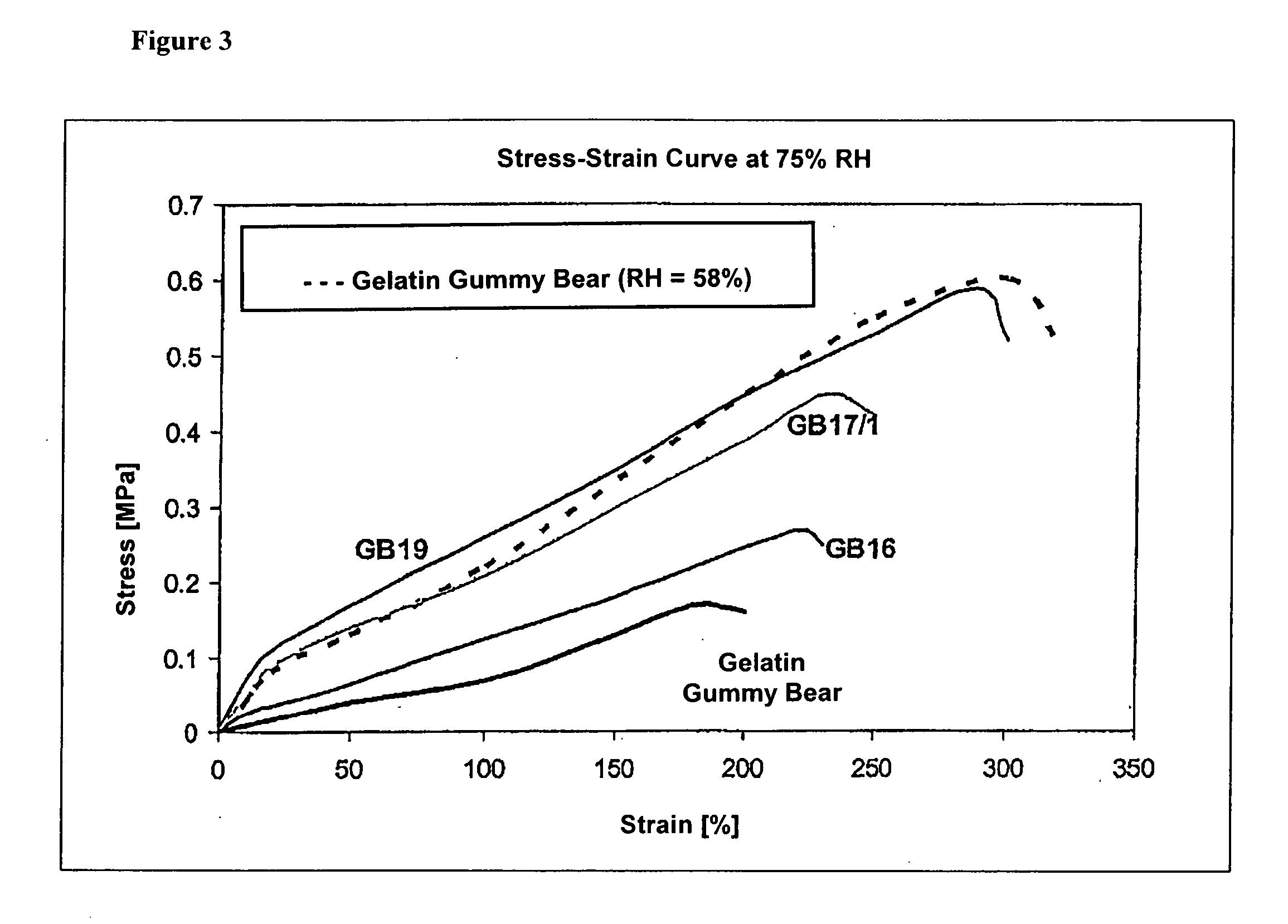Starch-based rubber-elastic confectionery
a technology of rubber elastic and sugar, applied in the field of sugar-based rubber elastic confectionery, can solve the problems of comparatively rigid and inelastic macromolecules, and the adjustment of rubber elastic behavior is made more difficult, and achieves the effect of increasing mobility and reducing rigidity
- Summary
- Abstract
- Description
- Claims
- Application Information
AI Technical Summary
Benefits of technology
Problems solved by technology
Method used
Image
Examples
examples
[0070] For the examples, rubbery elastic candy was prepared, on the one hand, with a Brabender kneader and, on the other, by means of a microwave oven, comparable results being obtained. In both cases, the NS was prepared separately and then mixed with the remaining components. For this purpose, the mixing process was carried out with water contents ranging from 10 to 20% and at temperatures ranging from 80° to 130° C. The formulation s of the examples are listed in Table 1. Characteristic properties of the formulations are shown in FIGS. 1 to 11 and are explained in detail in the following. The examples are not intended to be limiting.
[0071] 1. In FIG. 1, the stress-strain curves, obtained in tensile tests from samples, which were in equilibrium with air having a relative humidity of 43%, are given for different formulations of rubber-elastic candy based on starch (GSB) based on an NS-containing network (the linkage points of which are formed by homocrystallites as well as by hete...
PUM
 Login to View More
Login to View More Abstract
Description
Claims
Application Information
 Login to View More
Login to View More - R&D
- Intellectual Property
- Life Sciences
- Materials
- Tech Scout
- Unparalleled Data Quality
- Higher Quality Content
- 60% Fewer Hallucinations
Browse by: Latest US Patents, China's latest patents, Technical Efficacy Thesaurus, Application Domain, Technology Topic, Popular Technical Reports.
© 2025 PatSnap. All rights reserved.Legal|Privacy policy|Modern Slavery Act Transparency Statement|Sitemap|About US| Contact US: help@patsnap.com



